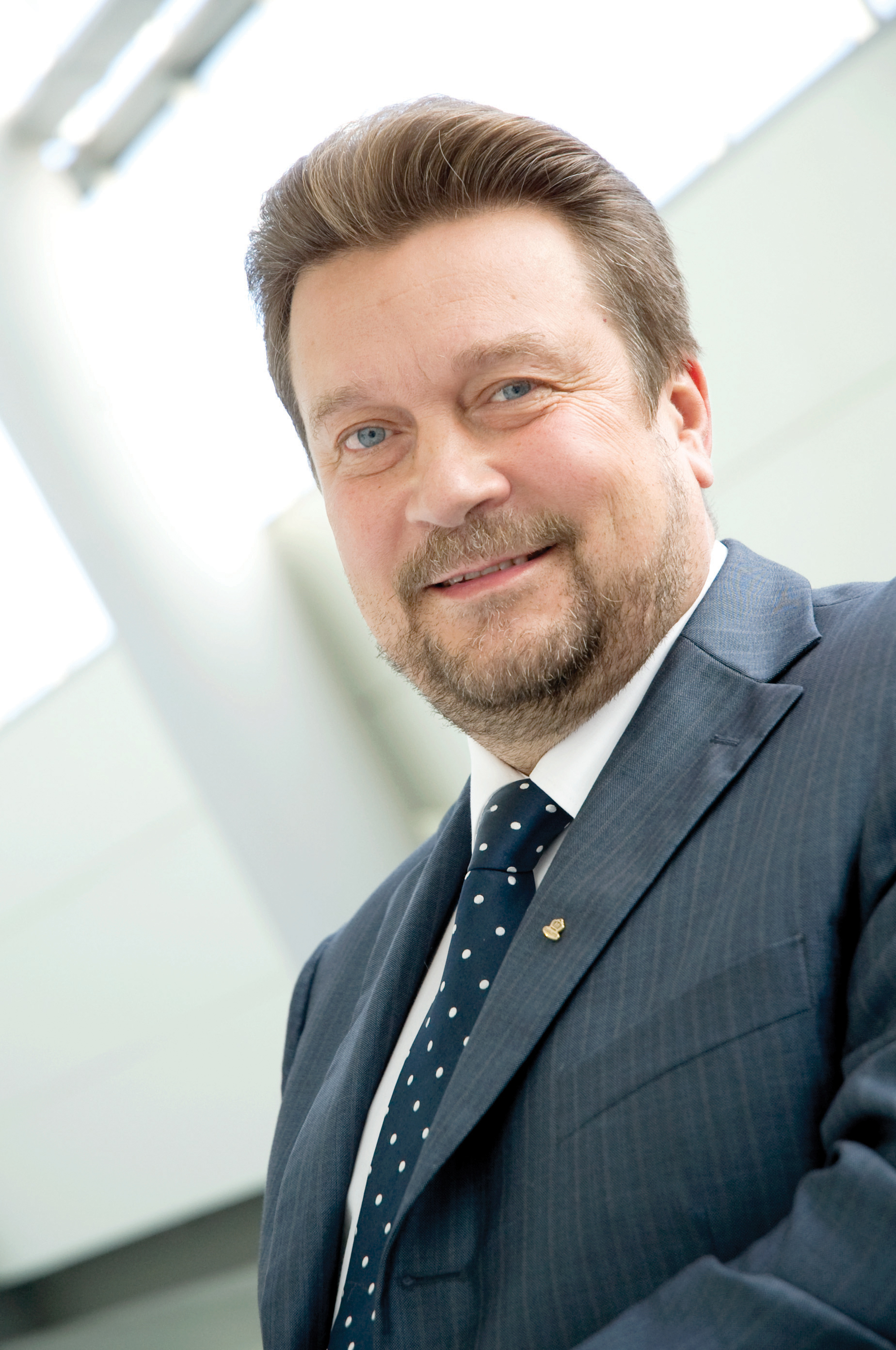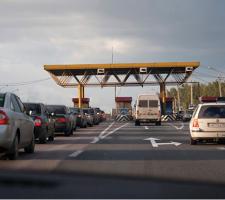
Russia’s transport systems are developing on a grand scale with ITS central to the plans, thanks in no small part to a recently relaunched ITS Russia. Jon Masters interviews the organisation’s chief executive officer Vladimir Kryuchkov
Over coming years many of the biggest deployments of new technology for transport are likely to be seen in Russia. For a political and economic superpower, the world’s biggest country has only recently started to harness ITS for the good of its transport networks. But the scale of Russia’s ambitions are impressive, backed up by a determination to see them realised.Under the leadership of former president Dmitry Medvedev, Russia has been taking steps to diversify its economy in recent years, from a traditional base of manufacturing, energy and raw materials. Symbolising these efforts is the Skolkovo ‘innovation cluster’ – a new science park of high-tech industries and academia near Moscow, soon to become the home of
Ministers of the Russian Federation and other government officials have evidently grasped the importance of expanding and modernising Russia’s transport systems.
One of the first moves of the new Moscow mayor Sergei Sobyanin in late 2010 was to state his desire to solve the capital’s acute traffic congestion. Nationally, new logistics hubs and port and rail developments are under way and plans are in hand for reconstructing 1380km of federal highway, with expansion and modernisation of the country’s ITS systems on a similar scale. ITS Russia has not been set up as a result of any government directive, however.
Russia’s ITS organisation was established initially in 2003 and relaunched reinvigorated as a non-profit-making partnership in 2008, principally as a private sector initiative. Since then, the organisation has grown to one of around 30 corporate members with that figure expected to double this year.
A key figure driving ITS Russia is its chief executive officer Vladimir Kryuchkov. An economist, strategic managementspecialist and former member of the Russian Parliament for the Kaluga region south west of Moscow, Kryuchkov was instrumental in establishing ITS Russia from its foundations in the car insurance market.
Vehicle theft had risen to unprecedented levels when Kryuchkov joined Moscow-based
“This united insurers in Russia and instigated a programme for preventing car thefts with use of satellite navigation and telematics technology for vehicle security. We worked out a viable system and criteria for equipment, which is now in use by all of Russia’s big insurance firms for vehicles of four different grades of risk,” Kryuchkov says.
This work of the PAIRP organisation, which continues to operate on behalf of insurers, was carried out in cooperation with a number of technology and telecommunications firms, vehicle manufacturers and telematics equipment suppliers. These relationships became the foundations of ITS Russia, incorporating road operators and contractors, academia and hardware and software suppliers, as well as vehicle manufacturers and insurers.
“The non-commercial partnership that became ITS Russia was formed because there were strong business cases for implementing particular ITS technologies,” says Kryuchkov.
“We knew we had to move fast. We were playing catch-up with ITS organisations and developments in other countries, so initial efforts focused on establishing international links and cooperation with
The formal launch of ITS Russia in 2008 brought in new members and a “stronger foundation”, Kryuchkov says. It also ushered in an agreement for the organisation to work as an ‘open platform’ to give a level playing field for all ITS technologies and transport systems. A two year period of a lot of meetings and conferences then followed, says Kryuchkov, as ITS Russia set about raising the profile of ITS among public authorities at home while building its relationships abroad.
New projects were already getting under way. Russia’s existing GLONASS system of 30 or so satellites presents a ready-made resource for ITS applications.
Pushing forward with standards
A new Russian national technical committee on ITS standardisation was formally ratified towards the end of 2011 under the auspices of Russia’s standardisation body ROSSTANDART. The technical committee, which will push forward with a programme of standardising ITS technology in Russia, has been formed by ITS Russia with the Federal Highway Agency, Russia’s principal seat of research and development in car and road technology Moscow Technical University (MADI) and the leading research institute in standardisation VNIIMASH.
The technical committee will oversee technology development and standardization work of seven subcommittees for ITS architecture and terminology; transport management and control and travel information systems; in-vehicle ITS and cooperative systems; paid services in ITS; fleet and commercial vehicle management systems; public transport; and vehicle security and theft recovery systems.Accordingly, much of the effort developing technology for traffic management, vehicle tracking, road safety and tolling is focused on satellite communication. ERA GLONASS – Russia’s version of Europe’s eCall – has emerged in rapid fashion, given a head start by the country’s established satellite technology and the vehicle tracking work of members of PAIRP. A national standard for ERA services has been drawn up and adopted, with the help of discussions with Ertico on technical requirements via a dedicated working group. A legal base for standardisation is still needed, but an ITS Russia and Ministry of Transport group is working on this. Around 70 communication suppliers have expressed interest and the Russian Government has established ‘special service provider’ Navigation Information Services (NIS) GLONASS by decree to provide Russia’s federal ERA network.
“This has been a very successful project. ERA GLONASS is on the way, but discussions are continuing with manufacturers on a date for mandating fitting of ERA equipment to all new vehicles,” Kryuchkov says. “This may be set for 2013/14, but it will then be a big jump to retrofit the entire fleet. For now, we’re just talking about fitting new vehicles.”
Nonetheless, ITS Russia’s efforts to strengthen links with government are clearly paying off. Advisors of Russia’s Ministry of Transport and Federal Road Agency now count among the members of ITS Russia, which is also working with the Ministry on a long-term strategy for Russia’s transport infrastructure.
The speed and scale of recent ITS developments suggest ITS Russia has been pushing against an open door. For instance, construction work has now started on a huge highway expansion and improvement programme of the Smart Silk Way project.
Ultimately the plan for this anticipates a continuous corridor of modern high capacity road transport from northern Europe through Russia and Kazakhstan to connect with China’s developing road network and beyond. While the Russian Government has been establishing agreements for cooperation on funding and the setting up of a common customs arrangement with Finland, Belarus and Kazakhstan, ITS Russia has been working with its international counterparts.
“This project presents a wonderful opportunity for cooperation across Asia for movement of goods and trade and for common ITS systems,” Kryuchkov says.
“The northern section from Helsinki to St Petersburg will be equipped by 2014 with modern ITS systems specified to an open platform to ensure interoperability across suppliers. We also want to equip all commercial vehicles with the same technology, working with South Korea’s
Altogether we will be working to the same ITS standards.” Systems of ITS expected to be applied to the Smart Silk Way include automated highway and traffic management, realtime traffic and weather information services, ERA GLONASS emergency call, freight monitoring, cross border transport management and electronic tolling.
The last of these is likely to be provided via a satellite-based system of vehicle tracking. Russia already has tolls applied to a small number of its major highways with cash payments collected manually.
It should be a relatively small leap to use satellite-based communication for charging all users of the Smart Silk Way, or heavy trucks on all of Russia’s principal highways – then eventually all vehicles on all main roads. NIS GLONASS has been set up with a remit to develop and promote satellite services for all sectors of industry. Earlier this year it entered into partnership with
“There is a federal programme for developing a system of tolling the main highway network in Russia with satellite use at its core. A toll for trucks would be a separate project and there is further work detailed in the NIS framework for a national programme that would charge all vehicles for using certain roads,” says Kryuchkov. “The necessary equipment is developing fast. We already have bus fleets in a number of major cities and all governmental and public sector service vehicles equipped and tracked via satellite.”
Furthermore, satellite technology is central to plans developing for extensive ITS systems in the city of Sochi ahead of its hosting of the Winter Olympics in 2014. “The idea here is to make Sochi a demonstration of the best of ITS technologies. Many visitors will come to Sochi and we have drawn up a concept of how the technology will serve the city when the Olympics has finished,” Kryuchkov says.
The list of ITS Russia’s activities is long and likely to get longer. Besides its established work – including supervision of Russia’s programme of monitoring the weight of loaded trucks – ITS Russia is working with the Federal Highway Agency on developing seven test sites for ITS technology.
Companies and universities at Skolkovo will be supporting these developments and Russia also has its hosting of the 2018
Kryuchkov is appreciative of the scale of the challenge. In Moscow alone, transport authorities are tackling extreme traffic congestion in a city of over 11 million people. “It’s a complex problem, which will not be solved by ITS alone,” he says. “ITS is an important tool, but we have to think about everything including transport policy and infrastructure. It demands a long-term plan.”













